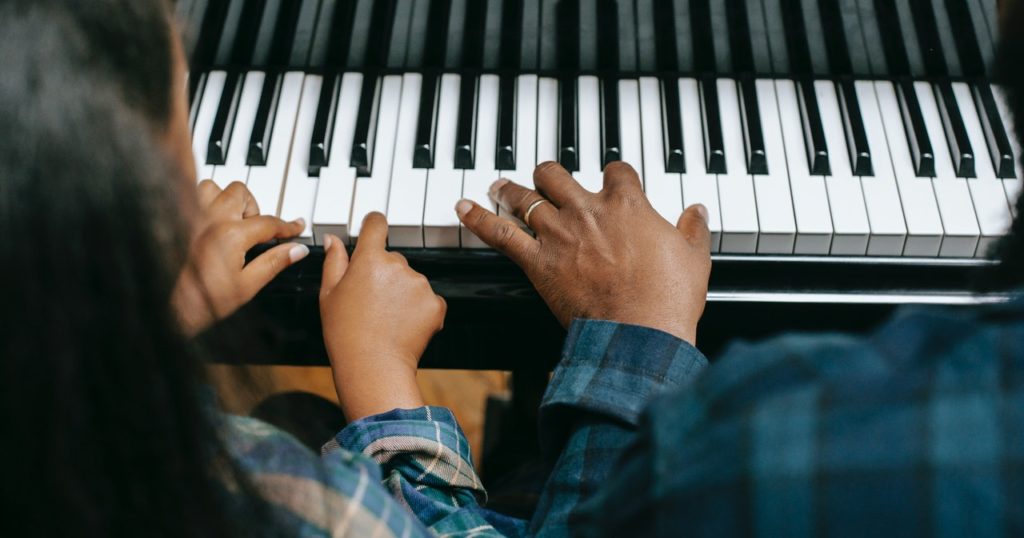Technology is integrated into every facet of everyday life. Nowadays, from the moment you wake up and right up to the moment you close your eyes to sleep, you are inundated with technology. It is not just the social media platforms that you browse endlessly, but also the devices that make life easier and more convenient. Take, for example, your coffee maker that delivers you a freshly brewed cup of coffee every single day of the workweek, or your fitness watch that encourages you to make healthy choices.
Technology is everywhere, but it is not always a bad thing. There are numerous benefits to using technology in the way we work, communicate with others, and learn.
Increasingly, technology is also being used in the classroom as a tool for teaching, particularly music.
Has Technology Made Young People Uninterested in Music?
The generation of kids in the present grows up in a world where the internet is prevalent and almost everyone owns a smartphone. In fact, many of them have started using electronic devices at a very young age.
Technology has been blamed for the shortening attention span of the entire population. A previous study from Microsoft Corp. revealed that humans can only focus on one thing for eight seconds.
Researchers found that people’s attention span started dropping around the 2000s, right around the time when mobile phones were becoming more widely-used. Since then, from 12 seconds, the average attention span went down to eight seconds. For comparison, the attention span of a goldfish is nine seconds.
Children have always had difficulties in maintaining interest in learning how to play an instrument. It begs the question, will the prevalence of technology make them less motivated to study music?

Integrating Technology in Music
Technology, if used correctly, can improve learning, even music. When children take professional piano lessons or teach themselves how to play the guitar, there are tools that they can use to enhance their learning.
Apple’s GarageBand, for example, is a digital music studio that exists as an app on the iPad. Through it, children can practice playing the piano or the guitar anywhere they are. It is fun to use and it is free when you purchase the tablet. The app also allows users to make music of their own, boosting their creativity.
Then, there is YouTube, an infinite, and free, source of knowledge. There are numerous channels on the video-sharing website and app that teaches how to play a musical instrument. The teachers on the platform range from enthusiasts to well-known musicians. Fender, an icon in music and a huge manufacturer of stringed instruments, has its own channel on YouTube.
If parents are concerned that technology might have led their children to lose interest in learning how to play the music, teachers are saying the contrary. One survey found that 74% of education believe that integrating technology in the music classroom increased motivation among students. Around 73% of respondents added that technology use in the music classroom makes students respond better to various styles of learning.
Moreover, with technology, learning does not end in the classroom. Students get access to more resources and materials that improve their skills. They do not just practice playing at home, they continue picking up new techniques and getting exposed to different kinds of music.
Music as a Social Activity
In addition, with technology, music stops being a lonesome pursuit. Kids, using their smartphones, can connect with other learners and collaborate. They also get to share their new-gained skills with their peers who cheer them on and motivate them to continue improving.
Young people are sharing their music on social media platforms such as TikTok, Instagram, and, of course, Youtube.
Through social media platforms, they can also reach out to their favorite musicians. Dave Grohl of Foo Fighters and formerly Nirvana had a virtual drum-off with a 10-year-old fan. Learners have the opportunity to ask for advice from their favorite musicians and actually get an answer.
These interactions can inspire a young person to continue pursuing music even if they can spend their time doing other things such as playing video games or streaming a television show.
Learning how to play a musical instrument offers tons of benefits for a growing child. It alters the way their brain works in a positive way. They can better understand abstract concepts, get higher scores in mathematics and science, and improve their reading. Music also teaches them soft skills that will be useful for when they grow up and enter the workforce.
